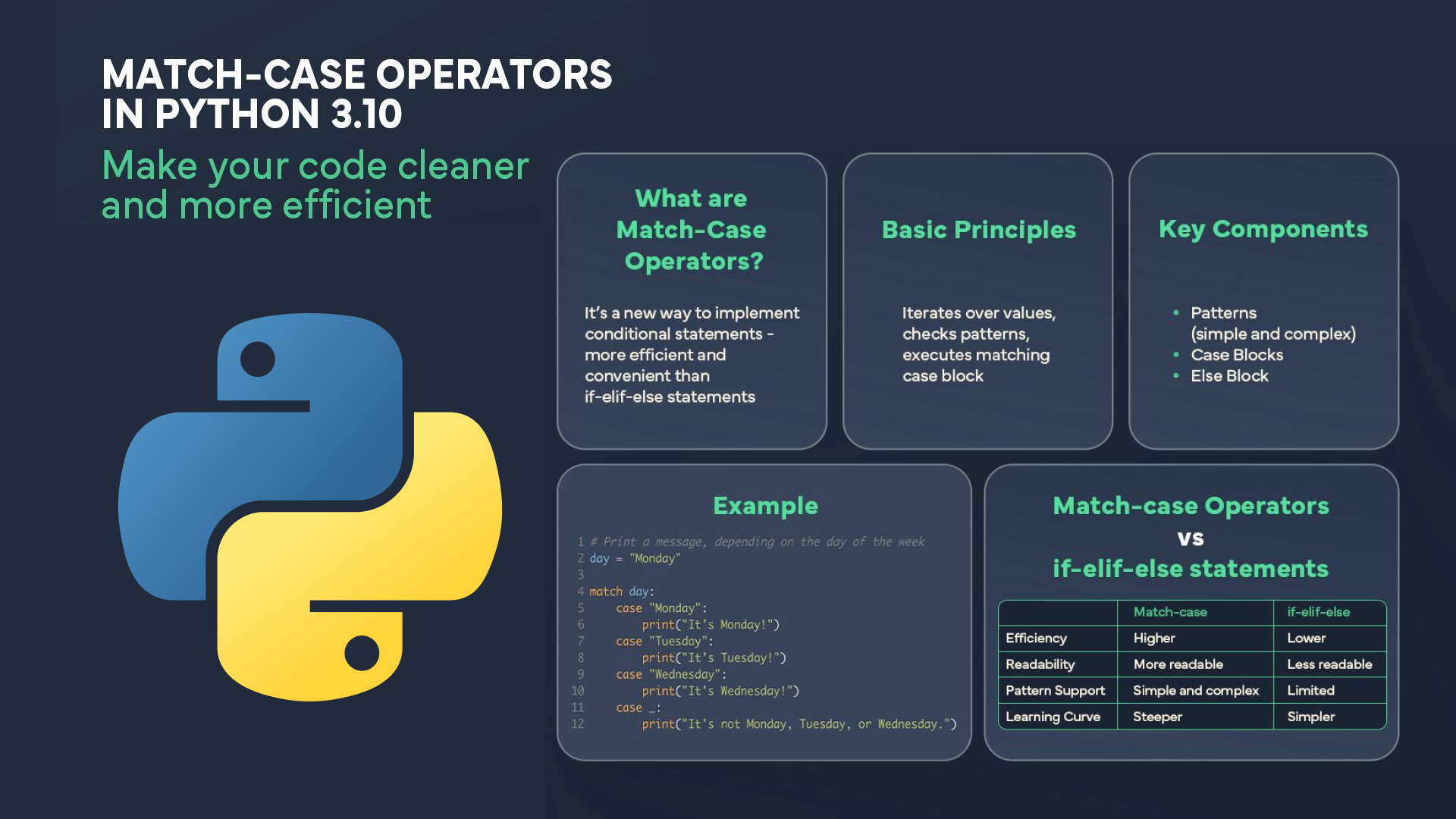Курси по темі
Всі курсиPython Tutorial
Your first programs

Python is a programming language that has conquered the world thanks to its simplicity and power. This language has become a favorite of many programmers and developers due to its ease of learning and the multitude of convenient tools that facilitate work on various tasks.
In this article, we will introduce you to the exciting world of Python and show you how to use this language to solve various tasks. You will learn about the basic commands, and we will also explore interesting examples and projects that will help you understand how to apply Python in practice.
Get ready for an exciting journey into the world of programming with Python, where you define the limits, and the possibilities are endless!
Your first program
Let's introduce ourselves to our first command and write our first program
The print function is a special command in the Python programming language that allows you to display text and values on the screen for users to see. It's a very useful command for showing the results of your program's execution or for presenting messages.
Here's how it works:

You specify what you want the print function to display by providing arguments inside parentheses. For example:
print("Hello, world!")
So, the print function helps you visualize the results of your program and present information to the user. It's one of the fundamental tools for displaying information in Python.
Variables and data types
Variables and data types in programming are important because they allow us to store, manipulate, and interact with information. Let's take a look at some of them.
Variables
A variable in Python is a name used to store data. Variables are used so that you can store, retrieve, and manipulate data during the execution of a program.

List
We can also write a set of values in a variable. Such groups of values are called lists.

Python has many more data types. You can learn more about these and other types of data in the following courses:
Code a real program
Let's take a look at the commands we just learned within a real program.

This program creates a password for you using random characters. Here's how it does it:
-
We have a list of different characters that can be in the password. This includes uppercase and lowercase letters, numbers, and special characters like @, #, $, and so on.
-
The program decides how many characters the password should have. It could be anywhere from 8 to 20 characters long.
-
Next, the program picks a random character from the list and adds it to the password. It does this as many times as needed to reach the desired password length.
-
When all the characters are added, the program displays the generated password on the screen.
So, you get a password with random characters, making it safe to use, like for logging into your online accounts.
Of course, a program cannot consist of just variables and lists, but knowledge of these topics can serve as an excellent foundation to start writing code and exploring new programming concepts.
Start Learning Coding today and boost your Career Potential

Conclusions
Python is undeniably one of the fundamental languages that anyone aspiring to excel in programming should learn. Its simplicity, readability, and wide range of applications make it a cornerstone for both beginners and experienced developers. Learning Python not only provides a strong foundation but also opens doors to various fields, from web development and data science to machine learning and data visualization, making it an invaluable skill in today's tech-driven world.
Python is currently the most popular direction on our platform. We offer a variety of high-quality and popular Python courses.
After learning Python, you will be able to understand the technologies that are needed for the professional field you choose. These courses are also available on our platform:
-
if you want to learn data visualization
-
if you want to learn data science
-
if you want to learn web development
FAQs
Q: Why should I choose Python to learn?
A: Python is an ideal choice for learning because it's easy to grasp, versatile for various applications, supported by a large community, offers rich libraries, and has high demand in the job market.
Q: Is it challenging to learn Python programming?
A: Python is generally considered one of the easiest programming languages to learn, especially for beginners. Its syntax is straightforward and resembles plain English, which makes it less challenging than some other languages. Additionally, Python's readability and simplicity help reduce the learning curve.
However, the level of difficulty can vary from person to person based on individual background, prior experience with programming, and the complexity of the projects you undertake. Some aspects of Python, such as advanced topics in object-oriented programming or complex libraries, may be more challenging.
Overall, Python is a great choice for beginners because it provides a gentle introduction to programming concepts and offers a supportive community that can assist with any challenges you may encounter along the way. With dedication and practice, learning Python can be a rewarding and enjoyable experience.
Q: What programs are developed in Python?
A: Python is used to develop web applications, data analysis tools, and scientific computing applications. It's also a popular choice for machine learning and artificial intelligence projects. Python finds use in desktop applications, automation scripts, network programming, and cybersecurity tools. Additionally, it's favored in finance, education, and IoT development. Its versatility and extensive libraries make it suitable for a broad range of applications.
Курси по темі
Всі курсиThe SOLID Principles in Software Development
The SOLID Principles Overview
by Anastasiia Tsurkan
Backend Developer
Nov, 2023・8 min read

Match-case Operators in Python
Match-case Operators vs if-elif-else statements
by Oleh Lohvyn
Backend Developer
Dec, 2023・6 min read

30 Python Project Ideas for Beginners
Python Project Ideas
by Anastasiia Tsurkan
Backend Developer
Sep, 2024・14 min read

Зміст